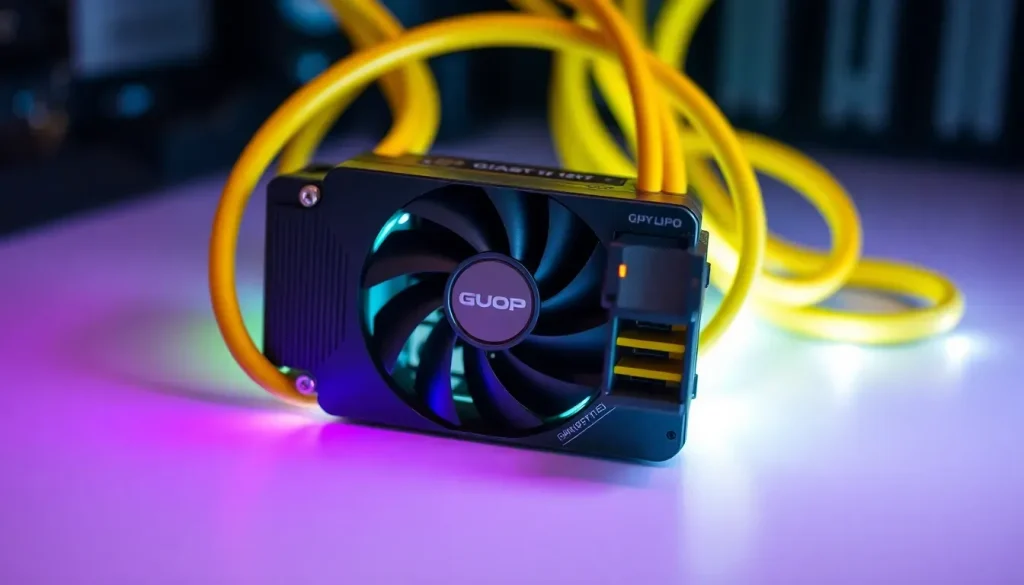GPU power supply issues persist despite using specialist cables

The ongoing saga of issues surrounding melting graphics card power connectors has taken a new turn, highlighting a significant problem that continues to affect gamers and PC enthusiasts alike. Even with innovative solutions and specialized cables designed to mitigate these issues, reports of overheating and damaged connectors persist. Let's delve deeper into this troubling phenomenon and explore the potential causes, solutions, and the impact on the gaming community.
The origins of the power connector crisis
The issue of melting power connectors first gained attention with the launch of Nvidia's RTX 40 series graphics cards. These cards introduced a new power connector known as the 12VHPWR, which was designed to handle higher power demands. However, early adopters quickly discovered that improper seating of the cables could lead to electrical arcing, resulting in overheating and damage to the connectors.
Initially, this problem seemed to be limited to Nvidia's flagship models, such as the RTX 4090 and RTX 5090. However, as time passed, reports of similar issues began to surface for other models, including the RTX 5080, raising concerns about the overall reliability of the new connector design.
Proposed solutions and fixes
In response to the growing number of incidents, various manufacturers and enthusiasts began to roll out potential solutions aimed at preventing further damage. Among these, MSI introduced a distinctive 12V-2×6 cable featuring bright yellow tips as a visual indicator. This design aimed to help users easily identify whether the cable was seated correctly in the socket.
- **Color-coded connectors**: MSI’s yellow-tipped cables were designed to provide a clear visual cue for proper seating.
- **Per-pin sensors**: Some innovative solutions involved sensors that detect proper cable connection.
- **User awareness**: Educating users about proper cable management and seating techniques was also encouraged.
Recent reports of cable failures
Despite these efforts, the problem has not been resolved. Recent reports from users on platforms like Reddit reveal that even the newly designed MSI 12V-2×6 cables are not immune to melting issues. In two separate incidents, users reported significant instability in their systems, accompanied by black screens upon reboot.
One user shared their experience on the MSI Gaming subreddit, detailing how their RTX 5090 began to show signs of failure, ultimately leading to a burned and partially melted connector. Another user on the PCMasterRace subreddit reported a similar situation, stating that this was their second RTX 5090 due to a previous failure.
Understanding transient power spikes
One of the underlying factors contributing to these issues is the phenomenon of transient power spikes. These sudden increases in voltage can occur for a variety of reasons, including fluctuations in electrical supply or sudden changes in power draw from the GPU. Understanding these spikes is crucial for both manufacturers and users in mitigating potential damage.
- **Electrical supply fluctuations**: Variations in power supply can lead to unexpected spikes.
- **GPU power draw**: High-performance GPUs can demand substantial power, potentially leading to spikes during intensive tasks.
- **Cable quality**: Inferior cables may not withstand the stresses of these spikes, increasing the risk of failure.
Examining cable specifications and compatibility
The compatibility and specifications of power cables used with GPUs are critical. For instance, the 8-pin PCIe cable is commonly utilized in many setups, but it is essential to ensure that the cable can handle the GPU's power requirements adequately.
Many users may wonder if the current power cables are universal. While many cables share similar connectors, variations in quality and specifications can lead to problems. Using cables designed specifically for a particular GPU model can minimize risks.
Why are Nvidia cards particularly affected?
The question arises: why are Nvidia graphics cards experiencing these issues more than others? The answer lies in design choices and power management technologies. The introduction of the 12VHPWR connector aimed to simplify power delivery to high-performance graphics cards, but it has also introduced complexities that have not been fully addressed.
Some of the concerns include:
- **Connector design**: The 12VHPWR connector has been criticized for its ability to securely hold the cable.
- **High power demands**: Nvidia's latest cards often require more power than previous generations, exacerbating existing issues.
- **User installation**: Improper connection by users can lead to arcing and overheating, raising the stakes for the design's effectiveness.
The future of GPU power connectors
As the gaming community eagerly awaits solutions, manufacturers are tasked with addressing the shortcomings of current power connector designs. The pressure for reliable and safe power delivery is immense. The ongoing incidents underscore the need for innovation and rigorous testing in GPU power supply systems.
In conclusion, the saga of melting graphics card power connectors continues to unfold, emphasizing the importance of user education, manufacturer responsibility, and ongoing innovation in the realm of PC hardware. As solutions are explored and implemented, the hope is that the issues plaguing users will soon be a thing of the past.
For those interested in a deeper analysis of the situation, check out this informative video that discusses the challenges surrounding GPU power connectors:
As technology evolves, so too must the ways in which we connect and power our devices. The gaming community remains vigilant, eager for solutions that ensure stability, performance, and safety in their setups.




Leave a Reply